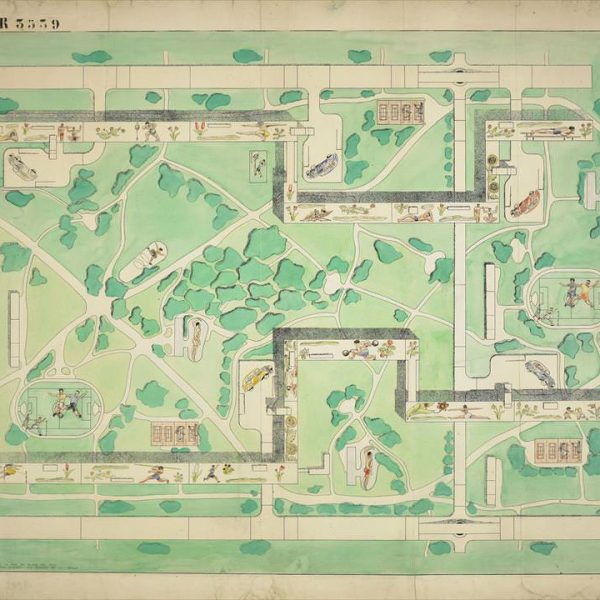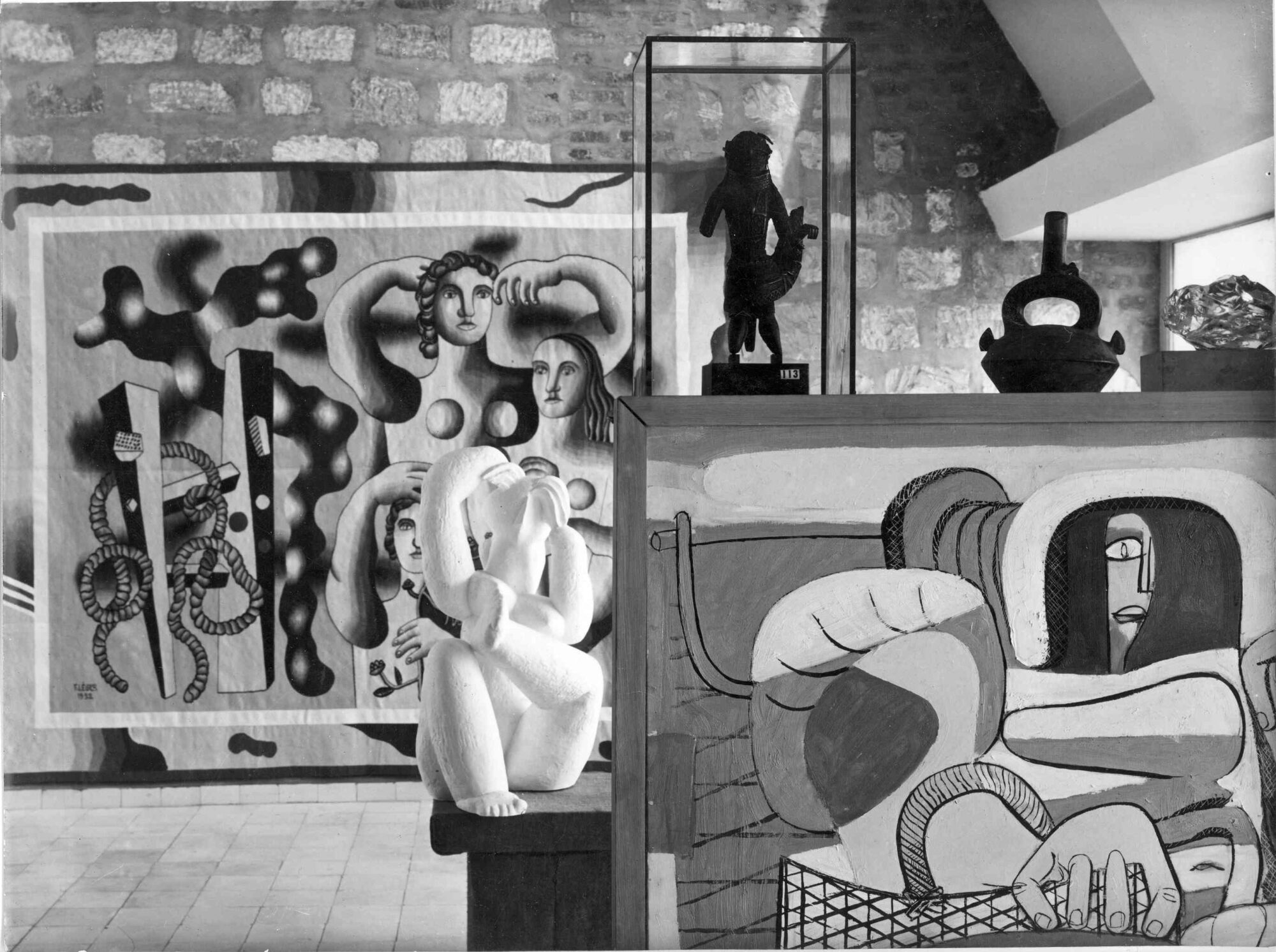
1929-1938: The globetrotter of modern architecture
.
1929-1934
On his return from the USSR, Le Corbusier became a key figure in the modern architecture debate. Orders poured into the studio for the Villa Savoye, the Centrosoyus, the Immeuble Clarté, the Cité de Refuge de l’Armée du Salut… For the first time, Le Corbusier was forced to turn down commissions because he was unable to fulfill them. In 1929, as the Wall Street crash shook world finance, he set sail for South America to discover a new continent. The “man with soles of wind” had to delegate management of the agency to his cousin Pierre Jeanneret, who remained in Paris. His global mobility took him from Algiers to Seville, Moscow to Brussels, London to Milan and Rome to Barcelona. He travelled by boat, plane and even by Zeppelin, making numerous appearances in response to calls, opportunities and requests for expertise.
A globetrotter in spite of himself, he embraced his role as tribune and herald of modern architecture with conviction. Due to the effects of the 1929 crisis on the building industry in many countries, his production dried up, despite the large number of projects submitted to the studio. Although a dozen projects were completed between 1926 and 1929, only the Immeuble Molitor saw the light of day during this period. Le Corbusier leaves definitively 20 rue Jacob, settles with his wife to 24 rue Nungesser et Coli in Boulogne-Billancourt. He now had a painter’s studio at his disposal, enabling him to carry out his pictorial research in excellent conditions and in the tranquility of the family home.
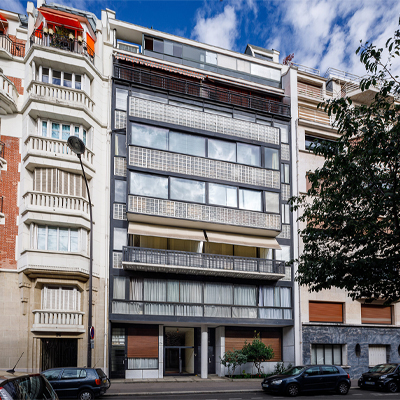

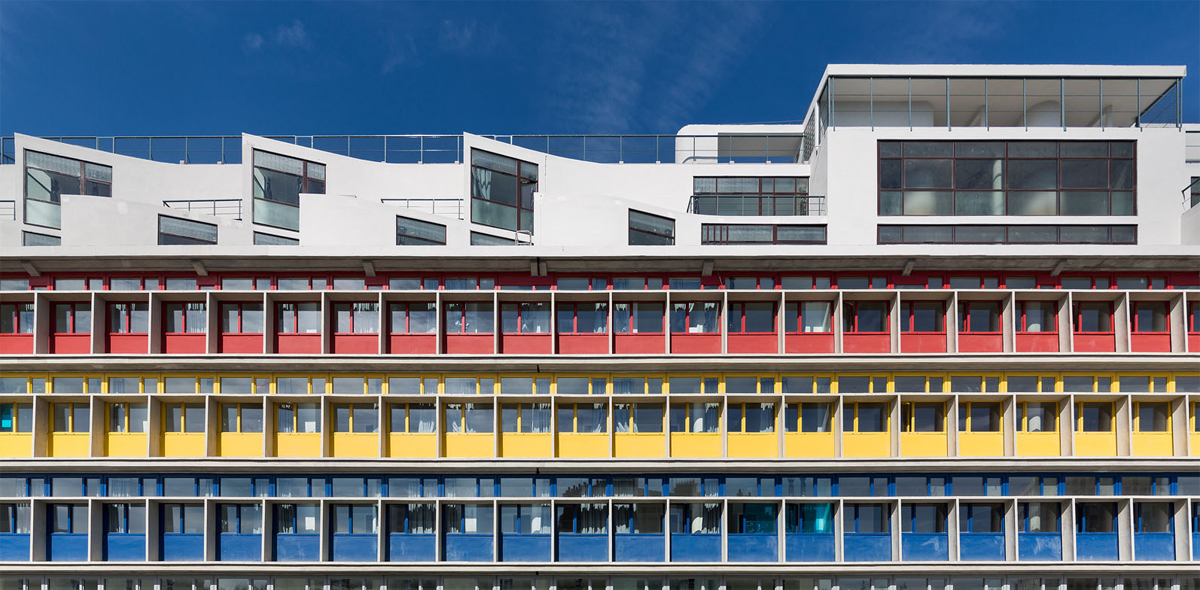
1929
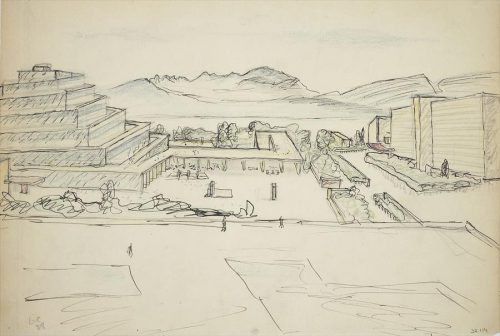
- The Mundaneum in Geneva
- Cité de Refuge commissioned by the Salvation Army
- First trip to Brazil and cycle of ten conferences between October 3 and 17 in Buenos Aires, Argentina
- Meet Josephine Baker aboard the Giulio Cesare
- CIAM II in Frankfurt am Main, on the theme of Minimum housing / Low-cost housing, chaired by Ernst May
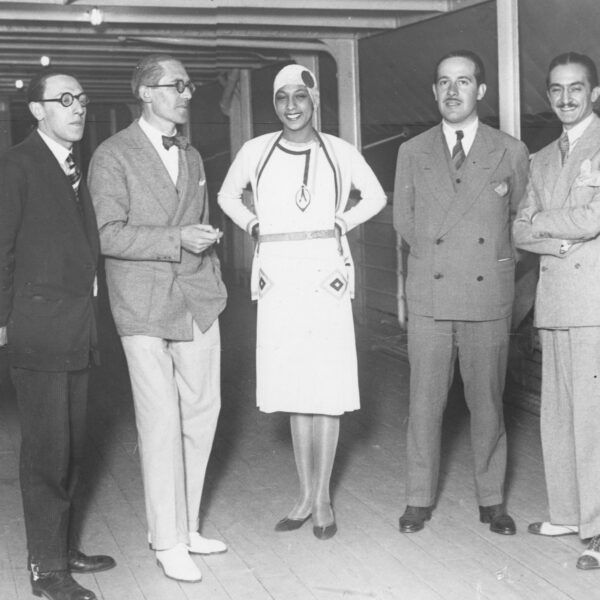

1930
- Construction of the Immeuble Clarté in Geneva, the Pavillon Suisse at the Cité Universitaire Internationale in Paris and the Pavillon S.T.A.R at Le Bourget
- Publication of Précisions sur un état présent de l’architecture et de l’urbanisme and the first volume of the Œuvre complète
- Beginning of the “women’s” decade of painting
- Le Corbusier travels to Spain with Fernand Léger, Pierre and his brother Albert in August
- September 19, French nationality granted by decree
- December 18, Marriage to Yvonne Gallis
- CIAM III in Brussels, on the theme: Rational methods for the construction of housing estates

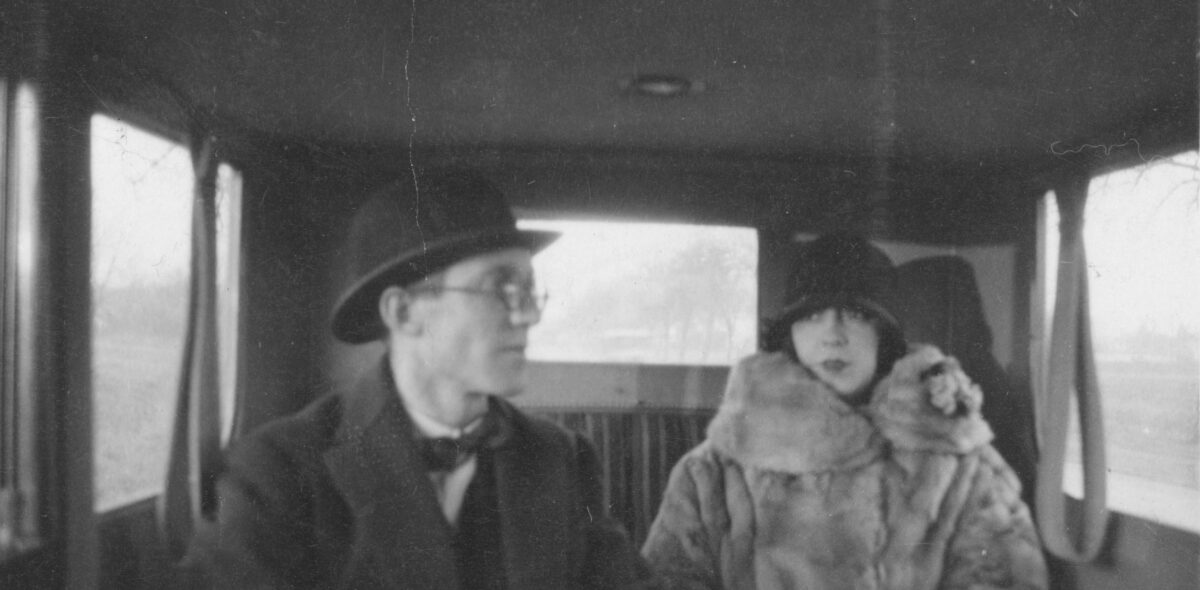
1931
- Conferences in Algiers in March
- Delivery of Villa Planeix in Paris
- Publication of Claviers de couleurs Salubra
- Contributing to Plans magazine




1932

- Liquidation of the company L’Esprit Nouveau
- Conferences on urban planning in Barcelona
- Construction work begins on the Immeuble Molitor
1933
- Inauguration of the Pavillon Suisse at the Cité internationale universitaire de Paris
- Inauguration of the Armée du Salut Cité de Refuge
- Exhibition of paintings at the John Becker Gallery in New York
- Conferences in Scandinavia
- In July and August, CIAM IV in Athens, on the theme of the Functional City
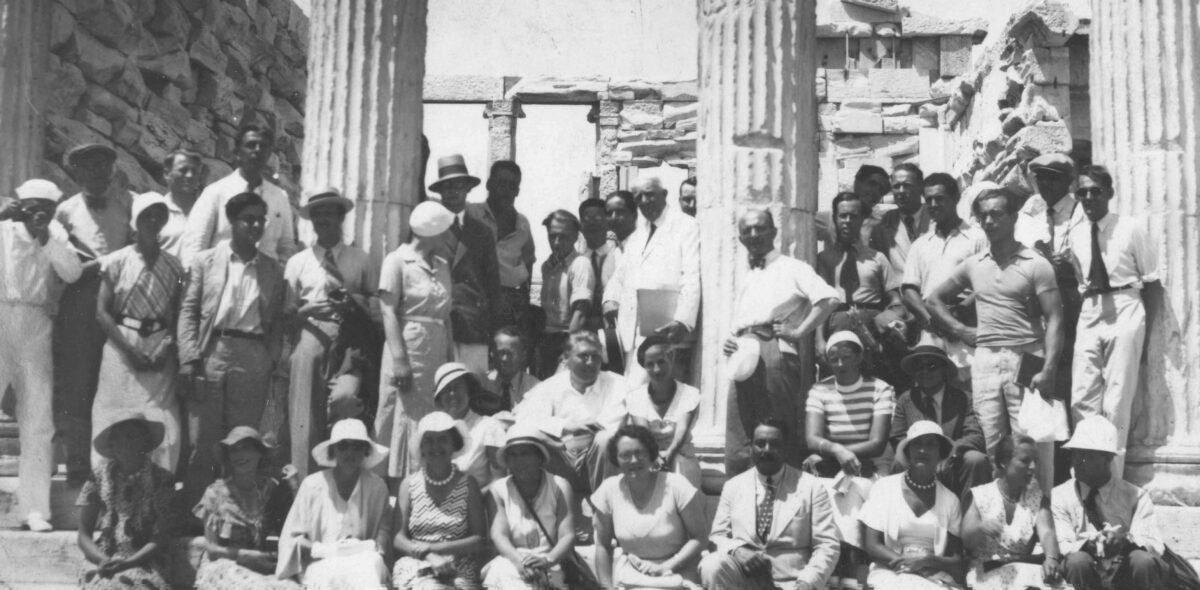
1934

- Installation in the apartment-studio in the Immeuble Molitor, for which he designs a “tree trunk” sofa and coffee table, as well as a marble table derived from the one in the Pavillon Suisse, in collaboration with Pierre Jeanneret and Charlotte Perriand
- Construction of the La Celle Saint-Cloud Maison de week-end
- Publication of the second volume of the Complete Works
1935-1938
The crisis of 1929, which had a lasting impact on Europe, slowed construction and brought many projects to a halt, as they had become unnecessary or too costly. Between 1935 and 1936, Le Corbusier pursued his career outside France. He traveled the American continent from New York to Rio, where he took part in the preliminary design for the Ministry of Education and Health with Lucio Costa, the only project of this period along with the Pavillon des Temps Nouveaux, built for the Paris Universal Exhibition.
Alongside his activities as an architect and urban planner, Le Corbusier devoted himself to his work as a visual artist. After the modest Exposition des Arts Primitifs, organized with the help of gallery owner Louis Carré at his home on rue Nungesser et Coli, he finally gained real recognition at the 1938 Zürich exhibition, devoted entirely to his work.
Always keen to make his mark, he continued his editorial activity, publishing in turn La Ville Radieuse, Quand les Cathédrales étaient blanches and Des canons, des munitions? Merci! Des logis s.v.p.
1935
- Publication of La Ville radieuse
- Construction of the Villa “Le Sextant” in Les Mathes
- Les arts dits primitifs exhibition held in his apartment in the Immeuble Molitor, as well as that of Louis Carré
- Design of furniture for the Appartement du jeune homme, for the Brussels Universal and International Exhibition, with Pierre Jeanneret and Charlotte Perriand.
- Le Corbusier’s first trip to the United States and trip to Buenos Aires
- Meets Albert Camus in Algiers

1936
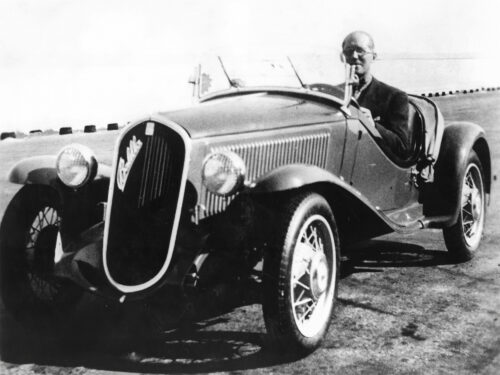
- Second trip to Brazil: participation in projects for the Ministère de l’Éducation Nationale et de la santé, the Cité Universitaire and a series of six conferences in Rio de Janeiro
- Produces the cardboard for his first tapestry, Marie Cuttoli, which he has woven at the former royal manufactures in Aubusson
- Project for a Stade de réjouissance populaire pour 100.000 personnes and Ilôt insalubre n°6
- Creation of murals at Jean Badovici’s home in Vézelay
- Resumes and develops his Voiture minimum project, for which he contacts major French manufacturers, twenty years before production of Citroën’s 2CV
- Visit to Fiat’s Lingotto factory in Turin

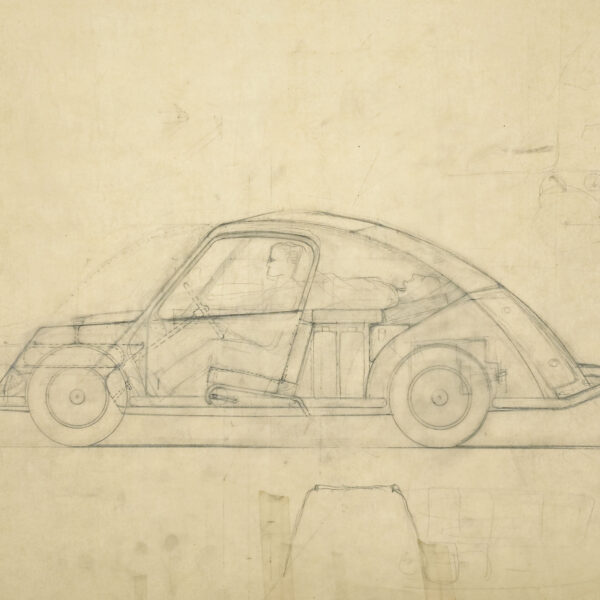
1937
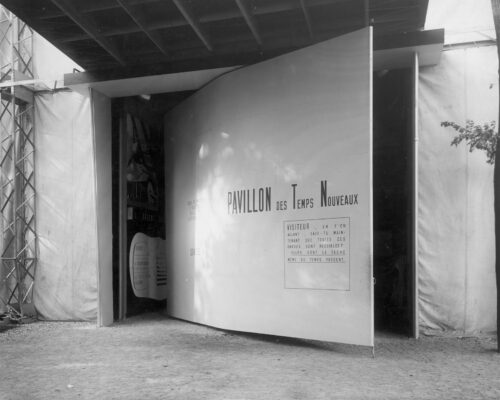
- Presides over CIAM V, Paris, Logis et loisirs and presents its Report n°1: Solutions in principle
- Publication of Quand les cathédrales étaient blanches: voyage au pays des timides (When cathedrals were white: a journey to the land of the timid)
- Inauguration of the Pavillon des Temps Nouveaux at the Paris International Exhibition
- Still life with a stack of plates and a book sold to the Museum of Modern Art in New
1938
- Jeu ville radieuse project
- Gratte-ciel, Quartier de la Marine project in Algiers
- Publication of the third volume of the Complete Works
- From January 15 to February 6, first retrospective of his work at the Museum of Fine Arts, Zurich
- In April he painted the first two murals for his friend Jean Badovici and Eileen Gray’s villa E-1027 in Roquebrune Cap Martin.
- Le Corbusier’s serious accident in St-Tropez in August
- From November 30 to December 17, 1938, Le Corbusier Peintures (1918-1938) exhibition at the Louis Carré gallery in Paris.
